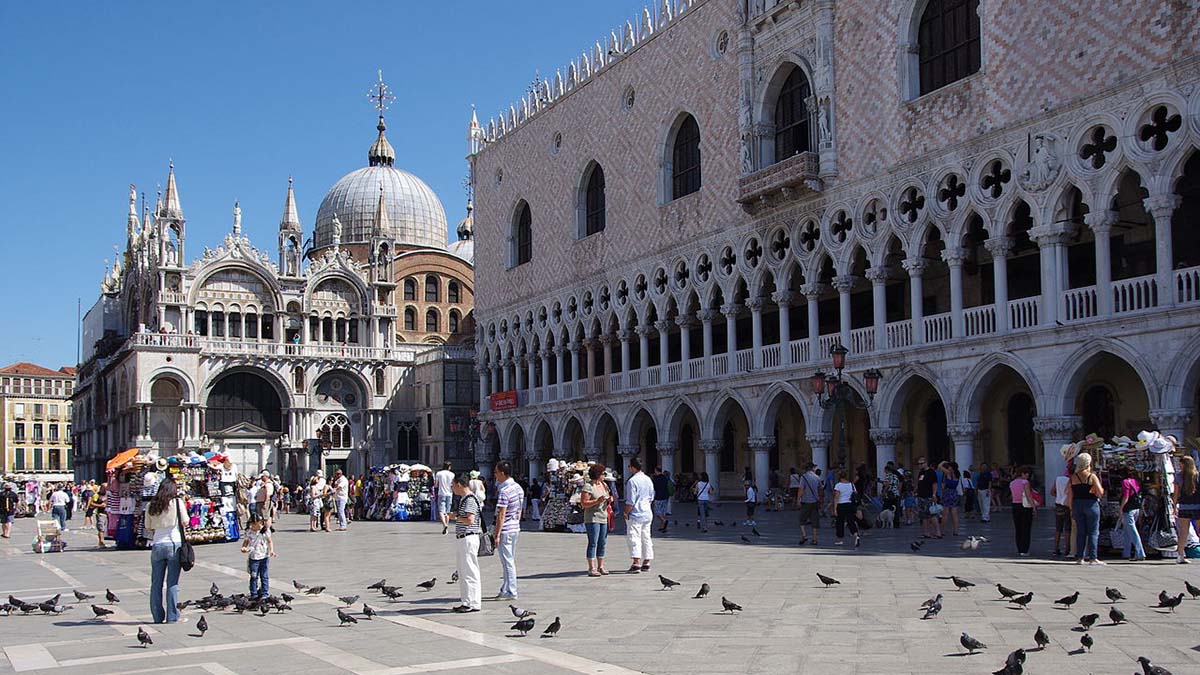
Italy
by W. Ruth Kozak
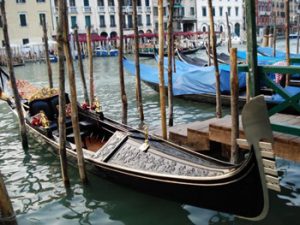 As I step outside my small hotel, it is the light in the piazza that impresses me first, the way it filters through the narrow passageway, a bright shaft of daylight flooding across the cobbled path. I stand transfixed for a moment, breathing in the scent of old stones and pungent sea. It is my first morning in Venice and I am anxious to explore her ancient promenades.
As I step outside my small hotel, it is the light in the piazza that impresses me first, the way it filters through the narrow passageway, a bright shaft of daylight flooding across the cobbled path. I stand transfixed for a moment, breathing in the scent of old stones and pungent sea. It is my first morning in Venice and I am anxious to explore her ancient promenades.
Venice is a city dappled with light, tremulous and flashing, shimmering gently beneath the bridges and seeping into the shadowy lanes. Once known as Serenissima, the most Serene Republic, for centuries the sun shimmering on gilded domes and pinnacles, the soft splash of the gondoliers’ poles as they guide their sleek black crafts through the narrow waterways has been the romantic inspiration of artists, poets and lovers. And now I am here, enchanted by her sensual allure.
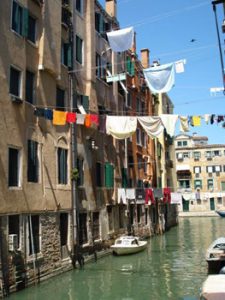 When I step into San Marco Square, it is absolutely deserted except for some early-morning artists sitting at their easels in front of the Doge’s Palace. I head down toward the Grand Canal and round the corner to view the Bridge of Sighs, so named because prisoners crossing it to the cells below were heard sighing. The canal is already bustling with watercraft: vaparettos, water taxis, motor launches, squat barges and the ubiquitous black gondolas. In Venice getting around by boat is the main means of transportation. There are no cars. A good way to see the city and the outlying islands is by vaparetto, the water buses that ply Venice’s canals along with the fleets of other craft. I buy a three day pass so I can hop on and off at any stop.
When I step into San Marco Square, it is absolutely deserted except for some early-morning artists sitting at their easels in front of the Doge’s Palace. I head down toward the Grand Canal and round the corner to view the Bridge of Sighs, so named because prisoners crossing it to the cells below were heard sighing. The canal is already bustling with watercraft: vaparettos, water taxis, motor launches, squat barges and the ubiquitous black gondolas. In Venice getting around by boat is the main means of transportation. There are no cars. A good way to see the city and the outlying islands is by vaparetto, the water buses that ply Venice’s canals along with the fleets of other craft. I buy a three day pass so I can hop on and off at any stop.
Venice is truly a wonder, and in spite of the reports of how it is sinking into the sea, it appears to be very much afloat. I visualize Venice in her heyday when gilded barges plied the waterways and gondoliers cruised the canals. The grandeur of the Doges still exists in the elaborate Palaces and residences that flank the wide cobblestone plaza of San Marco and along the canals are the hotels and houses where famous writers and noble families once lived.
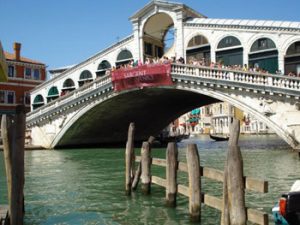 I make my way to the Rialto Bridge, a commercial centre of Venice since the 9th century where the city’s first market was established. Ships from around the world once docked here. It was the first bridge built to span the Grand Canal and is the most used. From here, I take a vaparetto to the isolated ghetto in Cannaregio. The term ‘ghetto’ originated in Venice referring to the foundries where metals for cannons were cast. The Jews who came to Venice in the 14th and 15 century were only allowed to live in the ghetto and were actually locked in at night, not allowed freedom to venture around the city. Because as they couldn’t expand, they built up, so the buildings here are the tallest in Venice
I make my way to the Rialto Bridge, a commercial centre of Venice since the 9th century where the city’s first market was established. Ships from around the world once docked here. It was the first bridge built to span the Grand Canal and is the most used. From here, I take a vaparetto to the isolated ghetto in Cannaregio. The term ‘ghetto’ originated in Venice referring to the foundries where metals for cannons were cast. The Jews who came to Venice in the 14th and 15 century were only allowed to live in the ghetto and were actually locked in at night, not allowed freedom to venture around the city. Because as they couldn’t expand, they built up, so the buildings here are the tallest in Venice
I eat lunch at a pleasant little sidewalk cafe on one of the shaded streets then head back across the bridges and through the maze of alleys to Castello, the Greek community at St. George Dei Greci. Once about 4,000 Greeks lived here , mostly merchants, book publishers, artists, scribes and literary scholars. Greece always had a strong link with Venice when the Venetian navy ruled the seaways. It seemed appropriate that I should end up at the Arsenal, guarded by its two great lions brought from Greece in 1687.
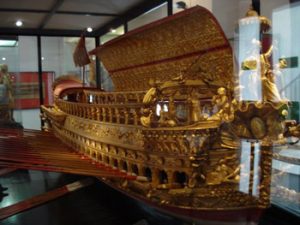 The Republic’s navy was docked here and ships built and maintained. At the Naval Museum I learned something of Venice’s naval history. Venetian shipbuilders were renown for their fabulous designs. There are models of all types of ships, gondolas and fishing craft used over the centuries, including elaborate models of Doges’ ceremonial barges all ornately gilded. I imagine Venice at the height of her glory, the lagoon and canals crowded with all these magnificent vessels.
The Republic’s navy was docked here and ships built and maintained. At the Naval Museum I learned something of Venice’s naval history. Venetian shipbuilders were renown for their fabulous designs. There are models of all types of ships, gondolas and fishing craft used over the centuries, including elaborate models of Doges’ ceremonial barges all ornately gilded. I imagine Venice at the height of her glory, the lagoon and canals crowded with all these magnificent vessels.
It seemed fitting after my tour of the naval museum, to take a gondola ride. It’s hard to describe the serene feeling you get as you cruise soundlessly along the canals. At each corner the gondolier shouts “Ohye!” to alert on-coming traffic. As the sleek high-prowed craft slides gracefully through the water I experience Venice as it used to be, Mistress of the seas, an enchanting seductress.
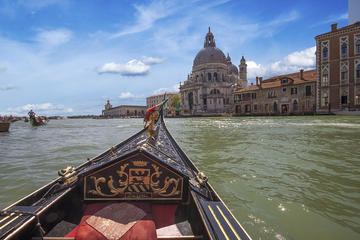
Enchanting Venice – Private Gondola Experience
If You Go:
The best time to see Venice is before eight in the morning and after eight at night when you can wander the labyrinth of alleyways free of the crowds, Venice is small, merely a cluster of tiny islands connected by a labyrinth of canals and alleyways only an arms width across. It isn’t difficult to navigate yourself around and you won’t get lost.
A three-Island Cruise is offered to the islands of Burano, Murano and Torcello for 19 Euro but you can also reach these islands and the Lido by vaparetto.
Private Tour: Murano, Burano and Torcello Half-Day Tour
FACTS: The central waterway is the Grand Canal (2 miles long). From that, smaller canals branch out. There are said to be 177 canals following old natural watercourses meandering through the city. When the tides are high parts of the city, like San Marco Square flood. Wooden walkways are provided.
Secrets of Venice Private Walking Tour with Guide
About the author:
It’s true that Venice really seduces you. Being there was one Ruth’s biggest thrills and no doubt one day she’ll return to cruise those waterways and sit in the piazzas. (You can see a picture of her in Venice on the Contact page.) In the meantime, Ruth is off to Greece again, her second home, in search of more stories. Email: contact@travelthruhistory.com
Photo Credits:
Piazza San Marco by Jakub Hałun / CC BY-SA
All other photographs are by W. Ruth Kozak



Leave a Reply
You must be logged in to post a comment.